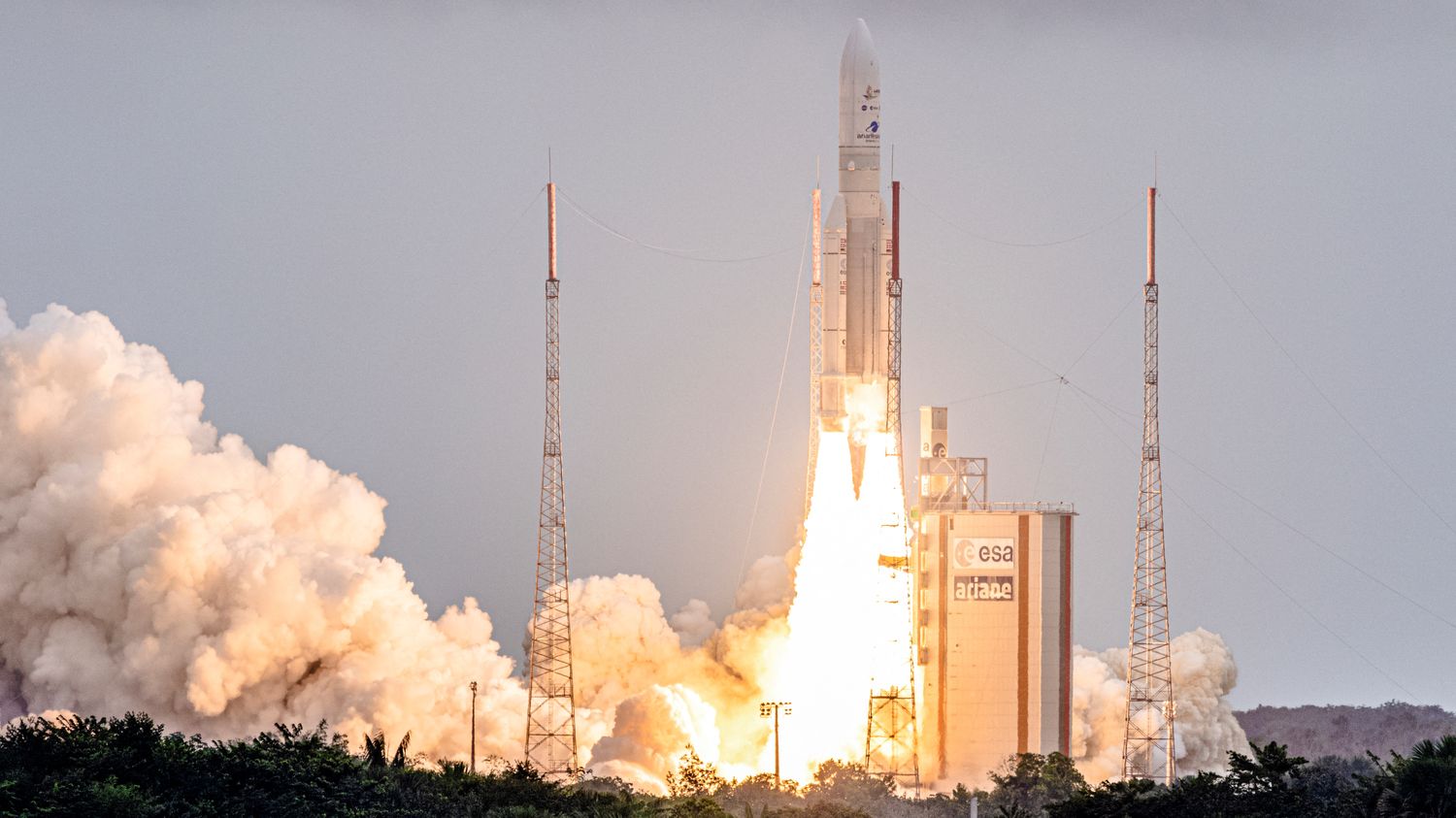The Ariane 5 rocket will bid farewell to Kourou, French Guiana, with its 117th and final launch. Ariane 6 should take over, but not everything is ready yet.
A page of space history is turning today in Kourou, Guyana. After 27 years of service, the Ariane 5 rocket is to take off for its 117th and final flight, with two military satellites on board. If the device has become the symbol of a great success for Europe in space, the story had however started very badly.
>> Last flight of Ariane 5: five defining moments in the career of the emblematic European rocket
It is June 4, 1996. It is gray over Kourou, at the Space Center. All eyes are on the brand new rocket. Takeoff went smoothly, but about thirty seconds later, Ariane 5 deviated from its trajectory and had to be destroyed. The images will make the front page of all the media. It will be necessary to wait more than a year to review the rocket on its launch pad, and even at the end of 1998 for a launch to be carried out perfectly. A chaotic start to say the least, but once these setbacks are over, it’s a beautiful and long story Ariane 5 has had a beautiful and long history.
Two large satellites on board each time
The rocket is over 50 meters high (it’s the size of the Arc de Triomphe in Paris). It weighs 780 tonnes at take-off, 90% of which is fuel. A concentrate of power that can place up to 10 tons of material in orbit. And what has made it stand out from the competition is Ariane 5’s ability to carry two large satellites. Olivier Sanguy, head of space news at the Cité de l’Espace in Toulouse: “The dual launch strategy was truly a linchpin of the success of Arianespace, and not just on Ariane 5, it had already been tested on previous versions. What is a dual launch? You have to imagine that under the headdress there are two satellites, instead of a single customer.”
We share the launch costs. We put a first satellite, we encapsulate it, and above, we put a second one. So when you go to geostationary orbit, you deliver two customers at once, and that’s been a game-changing business trick for two decades.
Olivier Sanguyfranceinfo
In addition to this commercial advantage, Ariane 5 has almost never experienced any failures. In total, the rocket has a very honorable record: 117 launches for 270 satellites placed in orbit and some large impulsive space missions, such as sending the Rosetta probe to visit comet Tchouri in 2004.

At the end of 2021, Ariane 5 perfectly launches the giant James Webb telescope. A jewel of technology to 10 billion euros entrusted by the United States. This rare gesture is a proof of confidence in the European rocket. Carine Leveau, director of space transport at the National Center for Space Studies (CNES) explains: “The precision with which we injected the telescope into orbit extended the life of the tool by five years. What characterizes Ariane 5 is its reliability and precision.”
Ariane 6 ready to take over?
Ariane 5 will therefore say goodbye this Friday evening, giving way to Ariane 6. A device which should have been put into service in 2020, but whose inaugural flight has still not taken place (it will probably take place in 2024). A situation partly attributable to the Covid-19 crisis, but not only according to engineer Frederic d’Allest: “In the summer of 2008, I wrote a column in Le Monde where I explained that we had no launcher in development to take over from Ariane 5. We had to wait until 2014 to decide on the Ariane 6 program. It is this delay, which is around 7 or 8 years, that we are paying for today. It is completely abnormal that since 2022 we no longer have a launcher in production. I think it’s unheard of in history.”

Space Europe is therefore impatiently awaiting the first launch of Ariane 6. Just like the teams that manufacture the parts. This is the case, for example, in the gigantic new building constructed in Les Mureaux, near Paris. Employees are waiting to be able to show the advantages of this new rocket, such as the reignitable engine, which will change the game. Mathieu Chaize is one of the program managers: “To give you an example, we have already had requests to put a first satellite in geostationary orbit and then take a second to the moon. And these are things that we could not imagine before.
The Ariane 6 order book is already full, with in particular a huge contract signed last year with Amazon for its future Kuiper telecommunications constellation: 18 launches are already planned.
